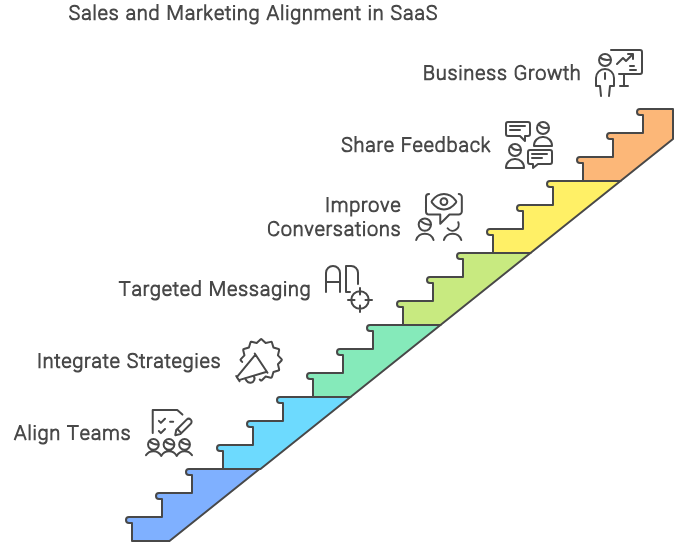Understanding SaaS Sales: The Basics Every Beginner Should Know

Do you know the global SaaS market grew by 500% in the last 7 years? This shows the huge opportunity in this fast-growing industry. Now is a great time to learn about SaaS sales, but starting can be hard. It’s key to know the basics to do well in SaaS sales.
This guide will cover all you need to begin in SaaS sales. This includes how to start, what models work, and the challenges you might face. It also tells you about the numbers you should follow and the tools to use. In 2020, the SaaS market was worth $157 billion. And by 2026, it could be double that. This means there’s a lot of room for growth for anyone who understands SaaS sales.
If you work in SaaS sales, you have a big part in making sales happen. But, you must learn the special SaaS sales process to do well. This guide is for anyone new or experienced in SaaS. It will give you tips and knowledge on how to be great in SaaS sales and marketing.
Key Takeaways
- The global SaaS market has experienced remarkable 500% growth over the last seven years, highlighting its immense potential.
- Understanding the fundamentals of SaaS sales, including the sales process, unique challenges, and effective techniques, is crucial for success.
- SaaS sales representatives are vital in driving SaaS purchases and must adapt to the industry’s unique dynamics.
- Exploring B2B SaaS marketing strategies, B2B SaaS sales strategies, and B2B SaaS marketing strategies can provide valuable insights for successful SaaS sales.
- Developing a comprehensive understanding of SaaS content marketing strategy, digital marketing strategy, and SaaS email marketing examples can help you effectively market and sell SaaS products.
What is SaaS?
SaaS stands for Software as a Service. It’s a model where you use software over the Internet. You don’t need to download or install it. The provider hosts the applications and takes care of the infrastructure, security, and updates. This model is becoming popular and might reach $307 billion by 2026.
Definition of SaaS
SaaS lets you use software through the internet. The software is not on your device. You can access it online or with a special program. The provider looks after the software, updates it, and keeps it secure.
Advantages of SaaS
Using SaaS has many benefits. It saves money on hardware and software. It’s easy to connect with other SaaS programs. You can use it on any device with the net. You can also change it to fit your needs. And software updates happen without disturbing your work.
What is SaaS Sales?
SaaS sales help by selling cloud-based stuff. Its goal is to make clients successful. This success could mean saving time and money or making more money.
It’s more complex than regular software sales. A salesperson has to teach the customer well. Then, they can make a sale.
The pricing for SaaS products is usually by subscription. Because of this, selling takes longer than usual. This calls for a special SAAS sales strategy. To get into SaaS sales, you need skills in many areas, from finding leads to keeping customers happy.
The SaaS Sales Process
Navigating the SaaS sales world needs a smart plan. This plan should tackle many steps. It goes from spotting good leads to helping even after the sale. Knowing the SaaS sales strategy, B2B SaaS sales strategy, SaaS content marketing strategy, and SaaS digital marketing strategy is key to reaching success.
Finding Leads
The start is all about finding and bringing in potential customers. A good SaaS content marketing strategy works here. It includes advertising, writing helpful blog posts, and using social media. You can also send out useful ebooks and interesting emails. Going to events and conferences can also help you meet good leads.
Qualifying Leads
After spotting possible leads, you must check if they fit your SaaS. This usually needs giving them a score and talking directly to a salesperson. Knowing what the lead needs, their budget, and how they decide helps. It lets you see if they’re ready for your SaaS through a B2B SaaS sales strategy.
Identifying Problem and Presenting Solution
The main part of selling SaaS is solving the lead’s business problems. You must show that your product is the right fix, know your product well, and listen to the lead’s concerns. If your SaaS sales strategy matches their needs, they’ll see your SaaS as the best choice.
Handling Objections
It is difficult but important to deal with complaints about cost, features, or fitting into their system. Anticipating and dealing with these issues head-on shows your value. Your product knowledge and focus on its benefits can help seal the deal.
Closing the Deal
The end goal is to sell your SaaS. This might mean offering a special price, fixing last concerns, and helping them sign up or buy. If this process is easy and smooth, it can lead to future sales and upgrades.
Customer Retention
In the SaaS world, keeping customers happy is the top priority. Giving great help after they buy, training, and chances to buy more are key parts of a SaaS digital marketing strategy. Keeping a close and valuable customer relationship helps your company succeed in the long term.
Inbound vs Outbound SaaS Sales
Marketing SaaS involves two key methods: inbound and outbound. Each has its strengths. Successful SaaS firms use both methods together.
Inbound SaaS Sales
In inbound sales, customers find you first by seeing and interacting with your online materials. Startups and products that people often search for find this model very helpful. You draw customers in by making useful and SEO-friendly content. Partnering with a B2B SEO solutions provider can further enhance your strategy by optimizing blogs, whitepapers, and webinars to improve search rankings and visibility. Doing this helps establish your company as a leader in the market, making customers more likely to choose you when they’re ready to buy.
Outbound SaaS Sales
Outbound sales are about going directly to the customers. It works well for products that cost more and take longer to sell. Your sales team must be good at sharing what’s great about your product. They use methods like email campaigns and networking online to find these customers. These people might not have found your product on their own.
Both ways of marketing SaaS have benefits. Mixing these methods can be a smart move. Companies can increase their brand’s reach and attract new, interested customers. They also target the valuable customers they already know about. This dual approach improves the chances of getting and keeping the best customers for your SaaS business.
Approaching SMBs and Enterprises
Regarding SaaS sales, SMBs and enterprises should be approached differently. SMBs prefer the inbound sales approach. They decide faster about buying, so they like clear marketing that immediately makes sense.
On the other hand, big companies need a consultative, outbound sales strategy. Their decision-making process involves many people. As a SaaS salesperson, you guide these big companies and show them how your product meets their needs.
Understand how SMBs and enterprises make choices. This understanding helps you tweak your sales and marketing strategies. Doing this will make you more successful in the busy SaaS market.
SaaS Sales Models
SaaS companies usually follow three unique sales models: customer self-service, transactional, or enterprise sales. Knowing the key points and tips helps create a great marketing strategy for SaaS products.
Customer Self-Service Model
This model works well for SaaS products with many users and a low price. It’s all about making it easy for people to use the service independently. Customers can sign up, set it up, and start without talking to a salesperson. This works best for products that appeal to a wide audience and sell quickly with minimal sales effort.
Transactional Sales Model
The transactional model is popular in SaaS, especially for reaching small and medium businesses. Here, sales teams reach out to customers to learn their needs and show how the product can help. The focus is on subscriptions and getting customers involved quickly. This method results in a swifter sales cycle than with the enterprise model.
Enterprise Sales Model
The enterprise model is all about big deals with large companies. Selling high-value solutions to these big customers requires a lot of personal contact. Salespeople need to know the customer’s business well and understand the product’s technical side. They also must be skilled at navigating the company’s complicated buying process.
Sales and Marketing Alignment
Your sales and marketing teams must work closely in the SaaS world. They ensure customers have a smooth experience from start to finish. Marketing finds and warms up leads while sales close the deal. By teaming up, they can shorten the time it takes to make a sale. This also boosts the number of leads that turn into customers. Marketing gives sales valuable information about who the customers are and what they need.

Your SaaS and digital marketing strategies must be integrated with your sales team. When these groups work together, customers move smoothly from first glance to purchase. Marketing creates special messages for possible buyers. Sales then use this information to improve conversations and solve objections. This helps everyone work better and quicker.
Also, sharing feedback and talking often between sales and marketing helps spot and fix cover-ups. This might mean improving how we count leads, improving sales tools, or smoothing the buying process. This way of working together keeps your SaaS company offering a solid deal to your customers. It helps your business grow and do well.

What Makes SaaS Sales Unique?
SaaS sales are not the same as selling regular software. To sell SaaS effectively, you must know your product. You must show how it works, fix problems, and answer tough questions. This helps build trust with customers and helps them through the buying process.
Technical Product Knowledge
However, selling SaaS is not just about caring about how a business benefits. You also need to understand the tech side of your product. You must explain how the SaaS platform differs and handle any tech worries or issues. This is important for sales and marketing your product online, too. Partnering with a B2B email marketing agency can help refine your SaaS content marketing strategy and implement effective SaaS email marketing campaigns to drive engagement and conversions.
Subscription Business Model
Selling SaaS uses a model where customers subscribe. Your goal is not just a one-time sale but to keep customers and sell them more services. It’s important to focus on making customers successful over time. This helps keep your sales going in the long run.
Longer Sales Cycles
Selling SaaS often takes longer, especially with big customers. Closing big deals means working with lots of people and taking your time. You must be ready to explain things and show the value of your product over time. This is how you win those important deals.
Challenges in SaaS Sales
Selling SaaS products faces many hurdles. SaaS salespeople must educate and guide customers through a long sales process. This often includes many decision-makers and complicated technical details. They must handle objections about price and features while showing the product’s value. They must also focus on keeping customers happy and finding new ways to sell to them.
One big challenge is helping customers through the long sales process. SaaS products usually involve many people, such as those who pick IT for end-users. They all need convincing. Salespeople must show that the product fits each person’s needs and answer any questions about the technology or money.
It can also be difficult to determine the cost of the product. Some customers might not want to pay monthly for a service, especially for big business solutions. Salespeople must explain how the product saves money in the long run and clarify that it’s more of an investment than a cost.
Keeping customers is vital for the SaaS world. SaaS companies need customers to keep using their products to keep making money. Salespeople need to look for opportunities to sell more to current customers and make sure the customer sees the value in what they’re getting.
To tackle these issues, SaaS sales teams should know their product and who they’re selling to. They should focus on solving the customer’s problems. This and caring about the customer’s needs can help them grow their business steadily.
Effective SaaS Sales Techniques
Great SaaS sales pros know that customers come first. They use a method that focuses on solving issues. They show off their products well, understand their customers inside out, and have a full toolkit for selling. With these skills, you can meet the challenges of this fast-paced market and help your company grow.
Customer-Centric Approach
In SaaS, putting the customer at the heart of sales is key. This means listening to what someone needs and then showing how your product meets those needs. Doing this can earn trust and keep your customers happy for the long term.
Problem-Solution Selling
Focusing on solving problems rather than product features works wonders in SaaS sales. You should show how your product can fix issues, making it seem essential rather than just another option.
Mastering Product Demos
It is crucial to showcase your product effectively. A great demo can highlight why your SaaS offering is valuable, answer questions, and resolve doubts. A successful demo means a possible sale.
Creating Customer Personas
Knowing your customers well can boost your sales. Create detailed personas to match your customers’ needs. This will help you tailor your sales tools and messages to connect more effectively with your audience.
Sales Playbook and Library
A good sales playbook and library can make selling smoother. They include everything from how to talk about your product to handling objections. This helps your sales team offer a consistent and strong sales pitch, leading to more successful sales.
Key SaaS Sales Metrics
As a SaaS sales pro, tracking key metrics is vital. These metrics show how healthy and fast your business is growing. A major metric is Customer Lifetime Value (CLTV). CLTV tells you the total revenue a customer could bring in during their time with your company.
Customer Lifetime Value (CLTV)
In the subscription SaaS model, CLTV is key. It helps you choose between focusing on getting new customers or keeping the ones you have. A high CLTV means your current customers are happy and willing to stay for a long time. However, a low CLTV might show issues with keeping customers or your product’s value unclear.
To boost your CLTV, focus on teaching your customers well, listen to what they say, and use strategies to offer them more. Knowing what your customers want lets you shape your sales and marketing plans. This improves everyone’s experience and keeps them coming back.
Conclusion
Knowing what is SaaS sales is key to doing well in its fast-growing field. SaaS salespeople must learn how sales work in SaaS. This includes focusing on customers, solving problems, and knowing the products deeply.
SaaS sales pros can solve market challenges with the right sales skills, like putting customers first and solving their issues. They can also help their companies grow. This involves creating materials for sales that cover a lot.
The SaaS marketing strategy is vital to helping SaaS sales. This happens through smart uses of marketing types like content and email. With these efforts, new leads can be found and nurtured, making sales run smoother.
It’s also very important that sales and marketing work together closely. This teamwork improves the customer’s journey and makes the most of SaaS’s way of doing business. It makes everything flow better.
How SaaS marketing changes means SaaS firms need to be ready with new ideas for selling and marketing. By knowing what’s special about SaaS and using top strategies, salespeople can help their companies succeed for a long time. They will find great chances for growth in this busy market.

 11 min read
11 min read









